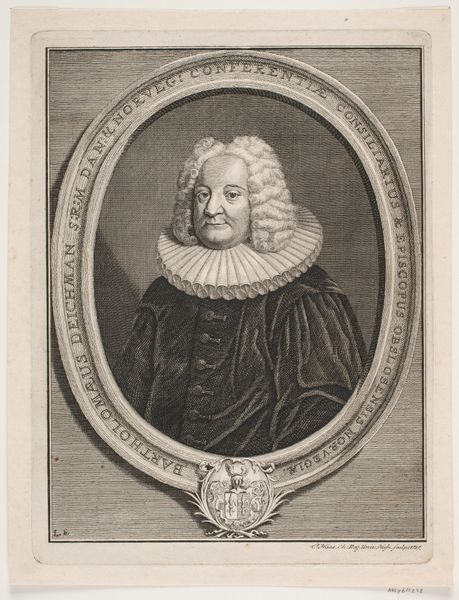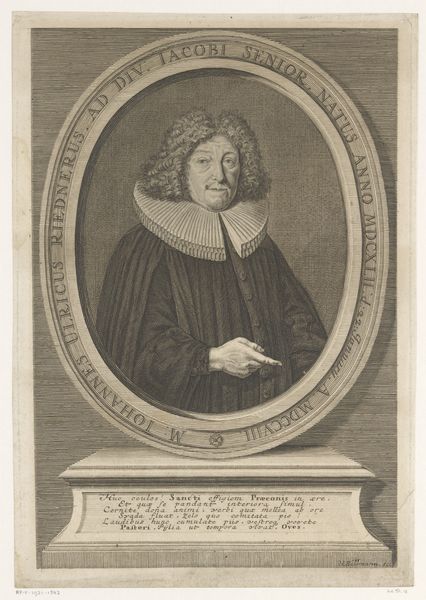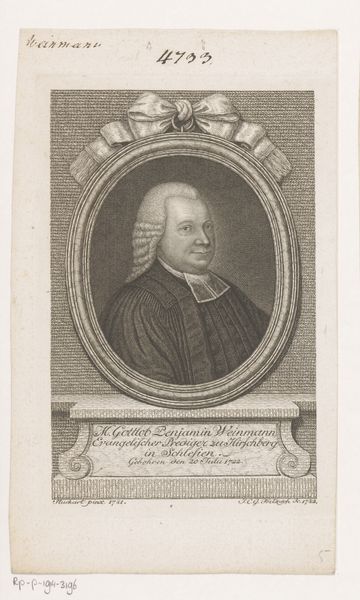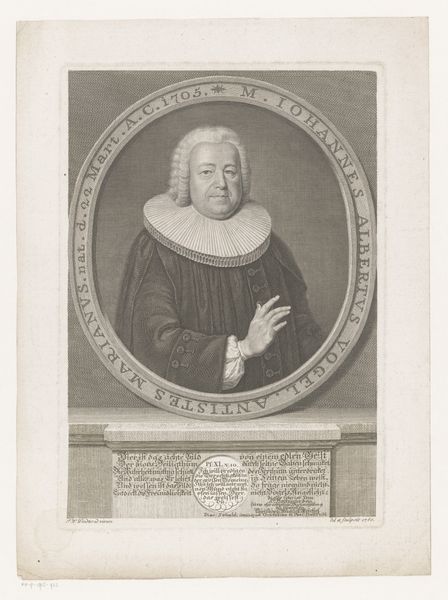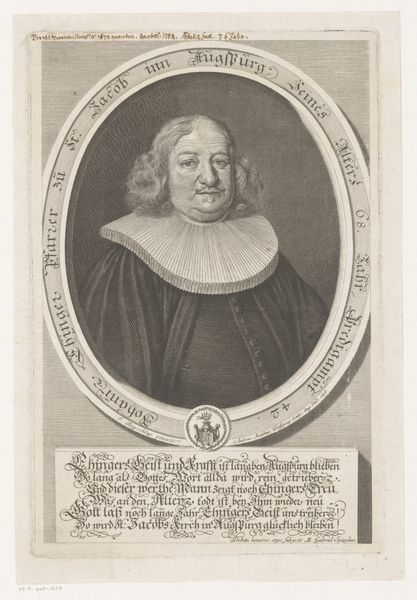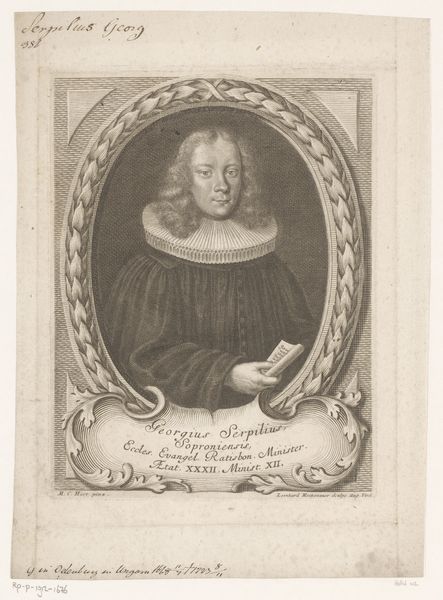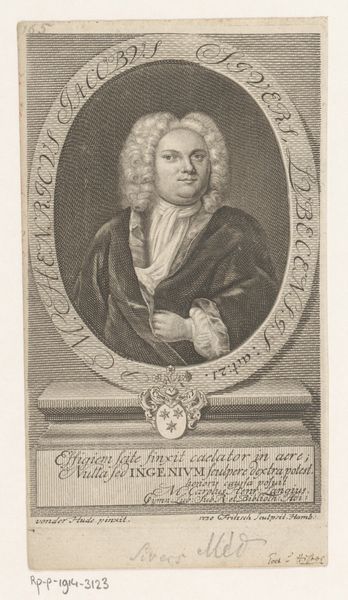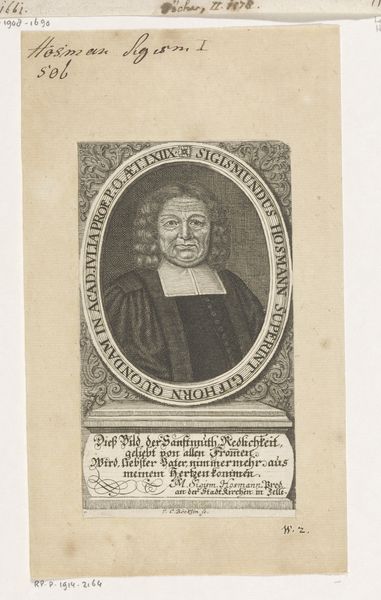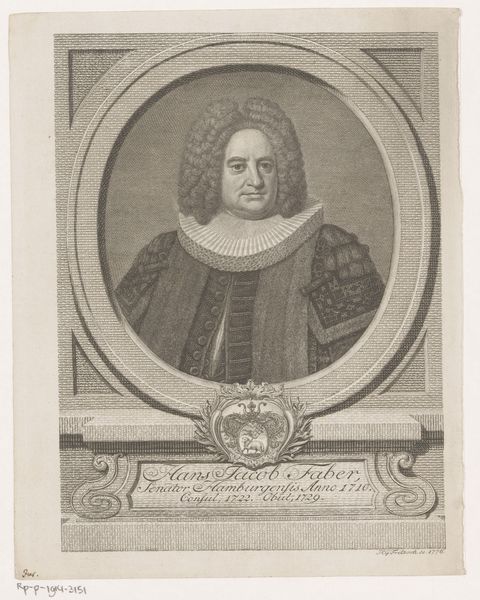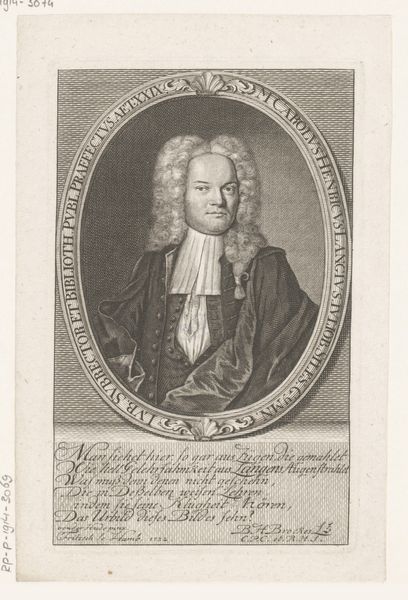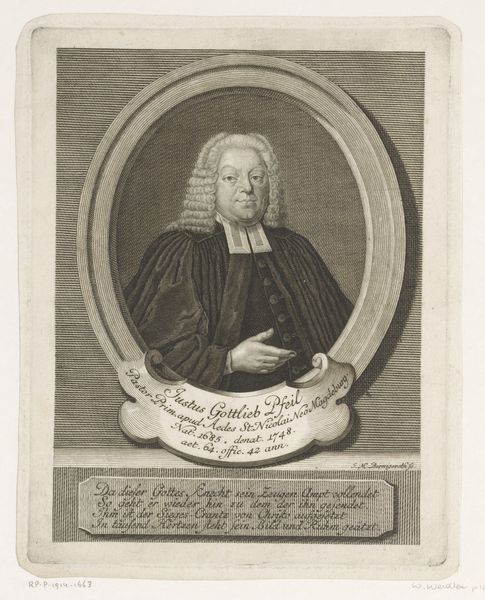
engraving
#
portrait
#
baroque
#
history-painting
#
engraving
Dimensions: height 156 mm, width 100 mm
Copyright: Rijks Museum: Open Domain
Editor: So, here we have Johann Martin Bernigeroth's "Portret van Christian Münden," dating from sometime between 1734 and 1767. It's an engraving currently at the Rijksmuseum. The most striking thing is that crisp white ruff. What do you see in this piece beyond the formal portrait? Curator: Well, considering Bernigeroth was working during the Baroque period, this portrait invites us to reflect on power structures. Think about the Reformation and its legacy in Germany. What did it mean to be a minister in Frankfurt at that time? What social influence did that role carry, and how is it reflected in his official dress and presentation? Editor: So the ruff, for example, isn't just fashion; it's a signifier of status? Curator: Exactly! The clothing, the elaborate wig – they’re visual cues designed to project authority and erudition. It’s important to remember that engravings like this weren't just decorative. They circulated ideas, reinforced social hierarchies, and constructed a visual identity for the sitter and the professional role. Bernigeroth likely made multiple prints; where do you think they may have been distributed? Editor: Maybe among Münden’s colleagues and followers to reinforce his importance, or as a memorial? I guess seeing it this way makes me think about how images participate in larger cultural narratives. Curator: Precisely! By situating "Portret van Christian Münden" within its historical and social context, we reveal how visual culture actively shaped and mirrored the realities of its time. We must be active in considering the social narratives it tells about gender, class, and faith. Editor: I've never thought so much about how social roles intersect with the portrayal. Thanks! Curator: It's about constantly questioning the visual language we inherit and its effect on present circumstances. I think considering visual narratives will have more prominence in my analysis.
Comments
No comments
Be the first to comment and join the conversation on the ultimate creative platform.
